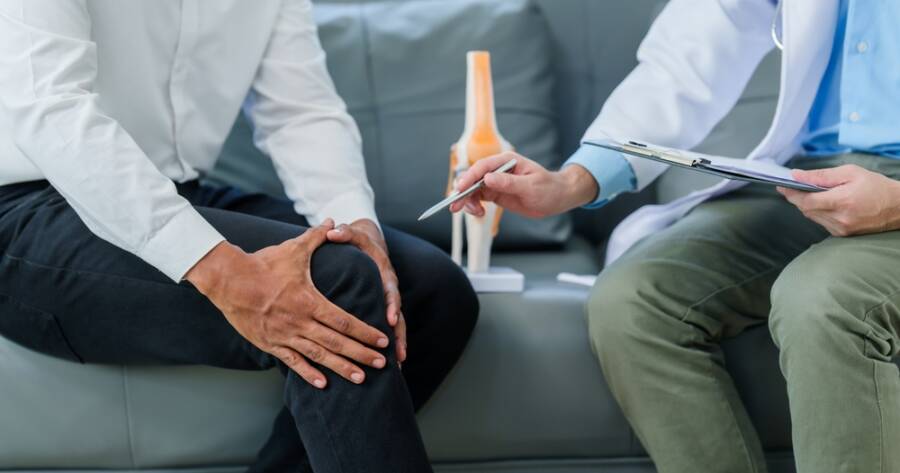Osteoarthritis (OA) is one of the most common forms of arthritis, affecting millions of people worldwide. Characterized by the gradual breakdown of joint cartilage, it can lead to stiffness, discomfort, and challenges with daily movement. However, living with OA doesn’t have to mean giving up on mobility or comfort. By incorporating thoughtful strategies, many individuals can manage their symptoms and maintain an active lifestyle. Here are practical tips to help you move more freely while navigating the challenges of OA.
Understanding Osteoarthritis: A Gentle Foundation
To make informed decisions about managing OA, it’s important to understand the condition. Osteoarthritis occurs when the protective cartilage that cushions the ends of your bones wears down over time. This can result in pain, swelling, and restricted movement in affected joints, often the knees, hips, hands, or spine. While the progression of OA varies among individuals, factors such as age, genetics, and prior injuries can increase risk.
Managing OA starts with knowledge. Learning about the condition allows you to approach it with a sense of control rather than fear. Consult with healthcare professionals who can guide you on your journey and provide personalized insights into your unique needs.
Staying Active: Movement as Medicine
Physical activity is crucial for maintaining joint health, though it’s natural to feel hesitant about moving when joints ache. Gentle, consistent exercise may help reduce stiffness and improve overall function. Low-impact activities such as swimming, walking, and cycling are excellent options for staying active without placing too much strain on the joints.
- Start small: Always consult a healthcare provider before beginning a new exercise routine, especially if you’re new to fitness. Begin with just a few minutes of activity and gradually increase duration and intensity as your body adjusts.
- Stretch regularly: Incorporate stretching to improve flexibility and support joint function. Focus on dynamic warm-ups before exercise and static stretches afterward.
Remember, every step counts. The goal isn’t to push through pain but to find movements that feel good for your body.
Weight Management: Lightening the Load on Your Joints
Excess weight can place added pressure on weight-bearing joints such as the knees and hips, potentially exacerbating OA symptoms. Research suggests that even modest weight loss might alleviate joint pain and improve mobility.
- Healthy eating habits: Adopting a nutrient-rich diet that emphasizes whole foods, lean proteins, fruits, and vegetables can help manage weight effectively. Avoid crash diets; instead, aim for gradual and sustainable changes.
- Support systems: Consider consulting a nutritionist or joining a support group for motivation and guidance. Collaboration often leads to more consistent results.
Weight management isn’t about achieving a specific number on the scale but about supporting your body in a way that reduces strain on your joints.
Pain Management: Exploring Options
OA pain can be unpredictable and frustrating, but there are multiple approaches that might help reduce discomfort.
- Topical treatments: Over-the-counter creams and gels containing ingredients like capsaicin or menthol may provide temporary relief when applied directly to the skin over an affected joint.
- Heat and cold therapy: Applying a heating pad can relax stiff joints and muscles, while cold packs may reduce swelling and numb sharp pain.
- Medication and supplements: Speak with your healthcare provider about appropriate medications, such as acetaminophen or nonsteroidal anti-inflammatory drugs (NSAIDs). In some cases, supplements like glucosamine and chondroitin may be discussed, though evidence on their effectiveness is mixed.
Always discuss pain management strategies with a healthcare professional to ensure they’re safe and suitable for your specific circumstances.
Assistive Devices and Home Adjustments: Enhancing Comfort
Making small adjustments to your environment can significantly improve your quality of life. Assistive devices like canes, braces, or shoe inserts can help alleviate strain on affected joints.
- Home modifications: Consider installing grab bars in the bathroom, using ergonomic tools in the kitchen, or opting for chairs with better lumbar support. These changes can make daily tasks easier and safer.
- Shoes matter: Proper footwear with good arch support and cushioning can reduce impact on joints and improve overall mobility. Consult a podiatrist for personalized recommendations.
Simple tools and adjustments can empower you to maintain independence and ease throughout your day.
Mental Health: Caring for the Whole Self
Living with OA can take an emotional toll, making it important to address mental health alongside physical health. Chronic pain can lead to frustration, sadness, or even depression. Recognizing these feelings and seeking support is an important part of managing the condition.
- Mindfulness and relaxation: Practices such as yoga, meditation, or deep breathing exercises can help reduce stress and improve your outlook. These methods may also help you manage the perception of pain.
- Community connections: Joining a support group—either in person or online—can provide camaraderie and encouragement from others who understand what you’re going through.
Your mental well-being is as vital as your physical health. Don’t hesitate to reach out for help when needed.
Embracing Life with Osteoarthritis
Living with osteoarthritis presents unique challenges, but it also offers an opportunity to explore new ways of moving, caring for your body, and adapting your environment. By staying informed and proactive, you can take steps to manage symptoms and maintain your quality of life.
Remember, every individual’s journey with OA is different. Patience, persistence, and the right support can make a significant difference in navigating life with this condition. Always consult with healthcare professionals to ensure your approach is tailored to your needs.
